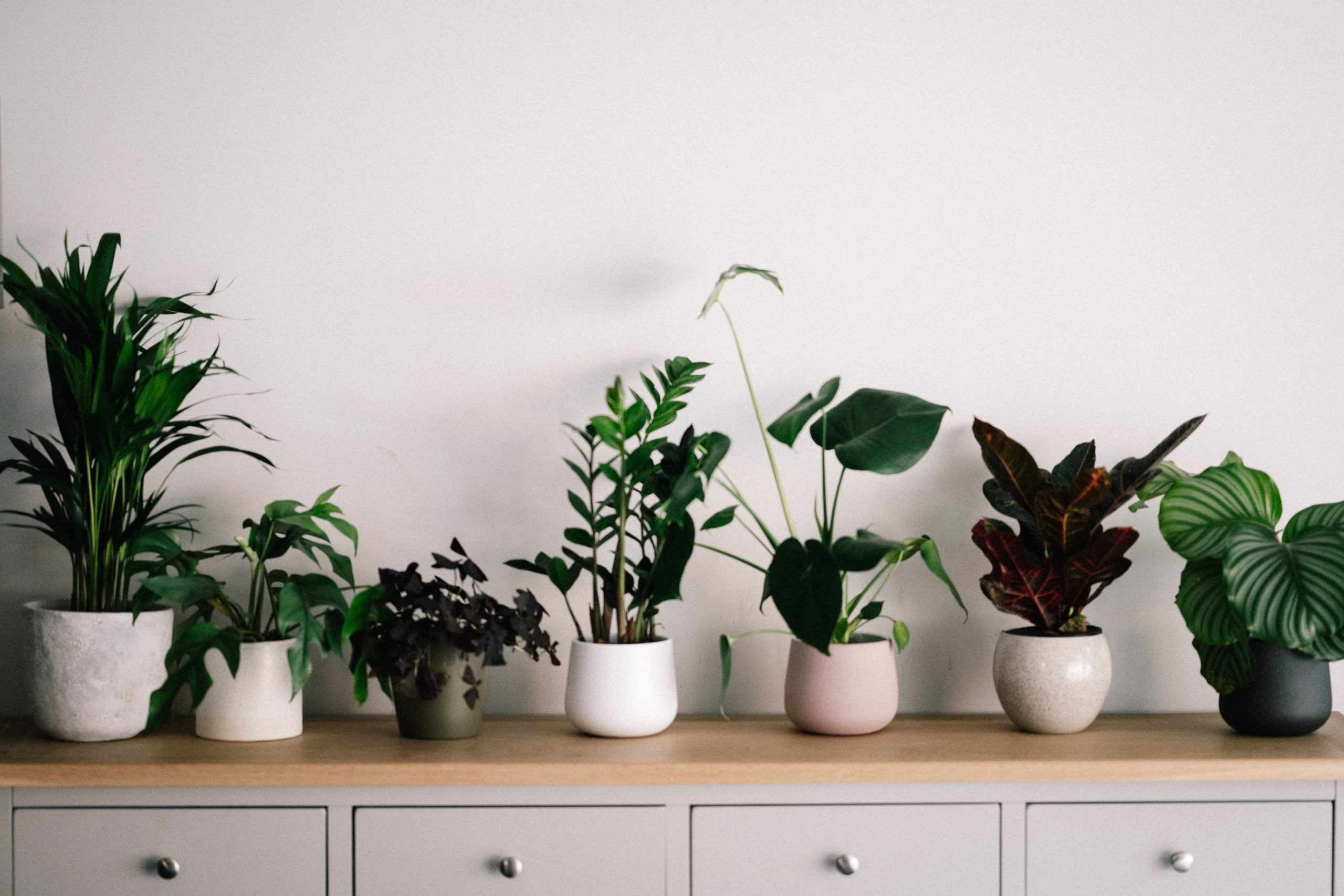Brightening your home with indoor plants and greenery has always been fashionable, but in today’s culture it’s never been more popular. Millennials and all younger generations are becoming known collectively as the ‘houseplant generation’; more often parents to succulents and foliage than to children.
But with so many different types of houseplants coming into your home, it can be difficult to know how to keep them healthy, happy, and luscious year round. Especially for those of us living in more extreme climates, indoor plant care can be a little tricky.
From our own personal experience, we’ve compiled a list of the top 9 tips for looking after your house plants. From how to water and feed them, to repotting, pruning, and placing them around the home, read on to become the Zen master of indoor plant care in 2022!
Top 9 Tips for Indoor Plant Care in 2022
Tip #1 – Choice
It can be tempting to buy plants based solely on their looks. After all, there are some really gorgeous houseplants out there. However, if you don’t have the right conditions at home to care for these plants, it’s going to be really hard to keep them alive and healthy. We suggest thinking about how much sunlight, humidity, and heat your home gets on a daily basis before choosing which plants to introduce to that space. Once you’ve got your plants home, observe them closely for a few weeks, taking notes on how much water each one drinks, how much sunlight they need, and where they are best placed.
Tip #2 – Water
Plants need four basic things: air, soil, sunlight, and water. Ironically, however, one of the most common killers of indoor plants is overwatering. Too much water basically drowns the roots of a plant, causing them to eventually rot and thus stopping them being able to drink the water. The best way to water just about any plant is to first test the saturation of the plant’s soil by sticking your finger into it. You should only water your plant when you can push your finger in and feel that the soil is dry up to the knuckle (middle of the finger). If the soil is at all damp, leave it to dry out a little longer before watering.
Pro Tip: Water your plants using room temperature water to maximise absorption. Reduce the amount you water your plants in winter, when most houseplants are dormant. Water cacti like you would any other plant (even if that sounds crazy!), just make sure their pots have adequate drainage.
Tip #3 – Drainage
Not all plants require drainage, but creating a good drainage system can make your job as a plant owner that much easier. You can either buy pots with drainage holes in the bottom and place them on trays, or place a layer of pebbles and small rocks beneath the soil in regular pots. This ensures that excess water will not clog the soil and oversaturate your plant’s roots, but drain away instead.
Tip #4 – Temperature
Different plants thrive under different temperatures, but the likelihood is that your home is going to be a relatively consistent and singular temperature, fluctuating only in summer and winter. If your houseplants get too cold, their roots can freeze, which may eventually kill them. Too hot, and your houseplants may wither. Try to keep your houseplants away from the coldest or hottest parts of your home, and maybe give them a nice rug to sit on instead of the cold bare floor!
Tip #5 – Humidity
Generally speaking, indoor plants (except for cacti) like humidity. A lot of indoor foliage plants are native to tropical and rainforest environments, and so thrive when those circumstances are recreated. Grouping your plants close together helps to raise humidity levels, as does spraying their leaves with water every few days (or every day in winter). Alternatively, of course, you can buy a humidifier for your home that will keep your plants feeling nice and pampered all year round.
Tip #6 – Maintenance
A little TLC never hurt anyone. To help your houseplants thrive, keep their leaves clean by giving them a wipe with a damp cloth once a month. Make sure to also trim away any dead foliage, snipping above the node at a 45 degree angle to encourage regrowth. Keep an eye on the needs of each individual plant, checking for mould on the soil or wilting, browning leaves (signs of overwatering), as well as for crisp edges around the leaves or stagnated growth (signs of underwatering).
Tip #7 – Sunlight
All plants need sunlight, yes, but different plants prefer different intensities of light. Some are used to open exposure to hard sun, whilst others grow in the shade when out in the wild. Research your specific plant types to determine if they need direct sunlight, indirect sunlight, or shade. If they need direct light, place them on a windowsill or as close to a south-facing window as you can. If they need indirect light, place them a metre or two from the window. If they need shade, find somewhere cool and shady (but not dark) to place them.
Tip #8 – Food
It may seem a good idea to feed your houseplants ‘plant food’ from the store, especially if they’re looking a little worse for wear. However, be careful. Outdoor plants need fertiliser much more than indoor plants do, and too much plant food can actually be harmful to the plant. Generally speaking, fresh soil will have more than enough nutrients for your plant. If you still want to feed them, however, then do so during the growing season (spring and early summer).
Tip #9 – Repotting
Last, but not least, let’s talk about potting. Your houseplants need to be repotted once every 12-18 months to keep them fresh and healthy. Repotting doesn’t mean that you have to put your plants in a different pot, it just means getting rid of the old soil, and replenishing the pot with new stuff. For most houseplants, a 10-10-10 soil mixture of nitrogen, potassium, and phosphorus works best, however flowering plants prefer potassium-heavy soil, whilst foliage plants prefer nitrogen-rich soil. Succulents and cacti require specialised potting mixtures. When repotting, you can choose to pot your plants in a bigger pot than before to encourage them to grow. Just make sure the pot isn’t too big, or else the plant’s roots won’t be able to absorb water from the soil before it drains away. One size up is just fine.
A Final Thought…
Looking after your indoor plants doesn’t have to be some massive chore. It’s actually super easy to keep most houseplants happy and healthy year-round. The most important thing to do is simply to observe the behaviour of your plants in those first few weeks, so that you can get used to their likes and dislikes. Always make sure to test the soil before watering, give your plants the humidity and sunlight they need, and repot them once a year. The rest will take care of itself! If you’re still unsure about becoming a plant parent, start out with some succulents – the hardiest of the houseplants!







